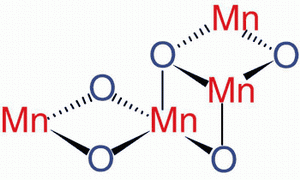 Hydrogen is being widely pursued as a fuel sources because it produces no greenhouse gases when used in either combustion of fuel cells. Producing hydrogen can be problematic though since pure hydrogen is rare. Scientists in Germany and the United States are working on yet another possible mechanism to create hydrogen gas. Researchers from the Max Planck Institute, the Technical University in Berlin, the Free University in Berlin and the Lawrence Berkeley National Laboratory are trying to understand the mechanism behind photosynthesis.
Hydrogen is being widely pursued as a fuel sources because it produces no greenhouse gases when used in either combustion of fuel cells. Producing hydrogen can be problematic though since pure hydrogen is rare. Scientists in Germany and the United States are working on yet another possible mechanism to create hydrogen gas. Researchers from the Max Planck Institute, the Technical University in Berlin, the Free University in Berlin and the Lawrence Berkeley National Laboratory are trying to understand the mechanism behind photosynthesis.
The intent is to create an artificial catalyst that can use the same chemical mechanism as photosynthesis to extract hydrogen from water with only sunlight as the power source. They have a created a cluster of manganese, calcium and oxygen atoms that when combined with water and sunlight produces molecular oxygen, along with protons and electrons which could be combined into hydrogen. This could conceivably provide a very efficient carbon-free method of producing hydrogen which could be done locally wherever you have water and sunlight, which rules out places like Seattle and England.
[Source: Physorg.com]


Sign in to post
Please sign in to leave a comment.
Continue